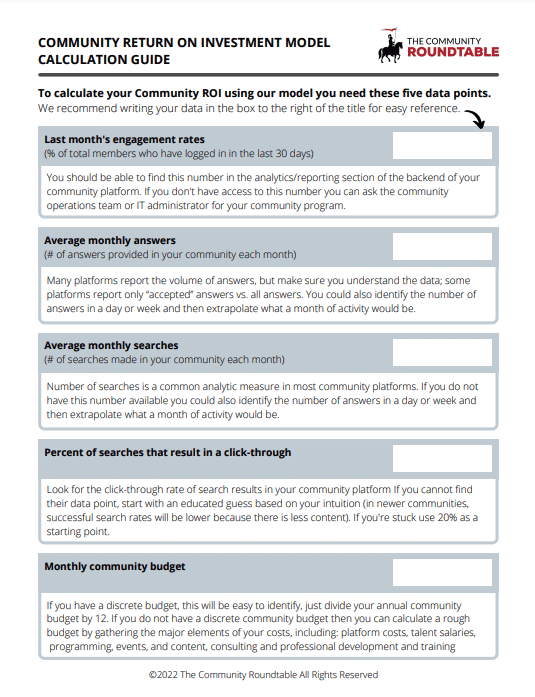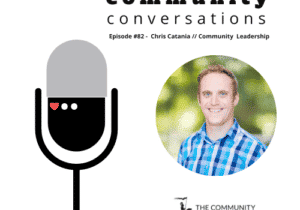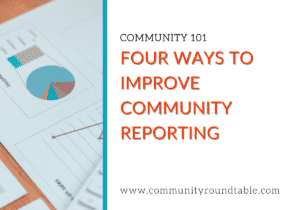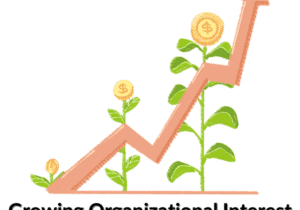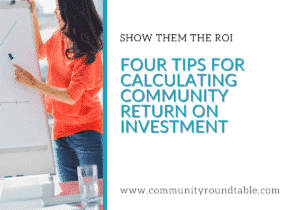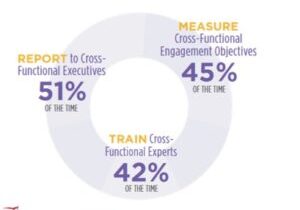Giving stakeholders something to react to is the prompt that leads to fantastic conversations with them about their community hopes, what they value, how they imagine success, what the community needs to get there and how long, in their minds, it might take. Those conversations are what will help you build a plan and a budget that gets approved.
There are two things to remember as you begin to calculate ROI. First, very few community professionals can calculate their community ROI. Many community professionals are oriented toward engagement and relationship building – not analysis. Second, we have observed and documented a few keystone behaviors that contribute value in every community – the most valuable of which is answering questions. When community members answer questions, it means someone doesn’t need to be assigned to answer them and it eliminates the need to answer them again and again because they are available to the entire community.
With this in mind, we have developed a baseline ROI model that can be applied to any community – based on how well the community is answering questions. The logic of this is that the most valuable engagement is the dialogue that follows a question and answer pattern, no matter what use case the community serves.
THE COMMUNITY ROUNDTABLE'S COMMUNITY ROI MODEL
Our ROI model measures return in two ways:
THE VALUE OF ANSWERS:
This is the absolute value of answers. This value may partially be displaced from other channels – i.e. the questions and answers could have been exchanged in email, through a ticketing system or over the phone. It can be hard to tell if these questions and answers were generated because of the community and therefore, you can choose to not include this value in your ROI model.
However, it is instructive because it allows stakeholders to see that this value is typically a tiny fraction of the Networked Value of Answers.
Data you need:
- Number of Answers
- Average Financial Value of an Answer
NETWORKED VALUE OF ANSWERS:
While enabling people to get their questions answered is great – an even greater value of a community approach is that those same answers are available to everyone else in the community at any time.
The Networked Value of Answers typically far outweighs the absolute value of the initial answers, by as much as 20x or more.
Data you need:
- Number of Searches
- Percentage of Searches that are Successful
Our ROI model measures investment in one way:
COMMUNITY BUDGET:
While not all community teams have discrete bud-gets, most community owners can come up with a pretty good estimate of the combined cost of salaries, technology, programming & events, con-tent, consultants, and professional development. We know from the research that the majority of community budgets are the technology and the human resources.
Data you need:
- Annual community budget OR
- Costs across multiple budgets that contribute to the community
ROI CALCULATION*:

*Make sure your time frames for answers and budget match (monthly or annual?)
CONFIDENTLY USING AMBIGUOUS DATA
While we’ve been able to distill community ROI to a relatively simple model, many communities either can't find or don't know how to derive the needed data.
This happens for any of the following reasons:
- Community platforms do not collect or generate the data required to understand value
- Community leaders have a difficult time estimating the data they can’t find
- Community leaders don’t focus on question and answering behaviors, which can leave communities full of superficial exchanges or acting as content repositories with little engagement
- People are uncomfortable estimating or using estimates
Of all of these, the place where community leaders can quickly improve is in developing good estimates, which is critical to building an ROI model since there may never be a perfect ‘right’ answer.
We talked to a lot of community professionals who were nervous about this piece because they felt like they didn't know where to start. There are a few things to keep in mind:
- ROI models are tools to get agreement on as-sumptions. They will always be ambiguous.
- Your original estimate can be off – even by a wide margin – because a big part of value of presenting an ROI model is to trigger conversations about what reasonable estimates are.
Understanding the purpose and value of the ROI model and its limitations is how to be confident about generating a community ROI and using it. Accepting that it will not be perfect – or even very close to total value – is part of that process.
Good luck!
